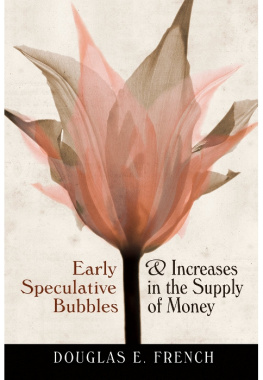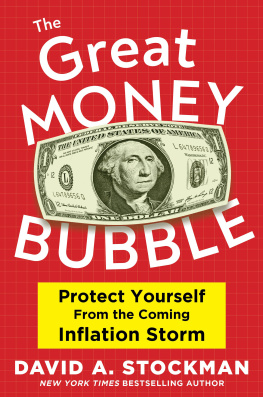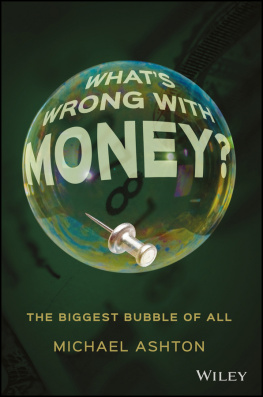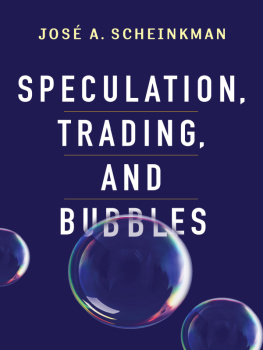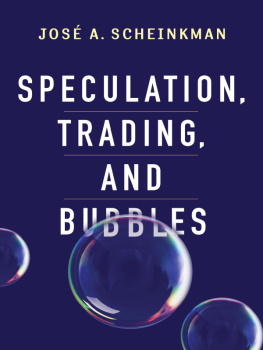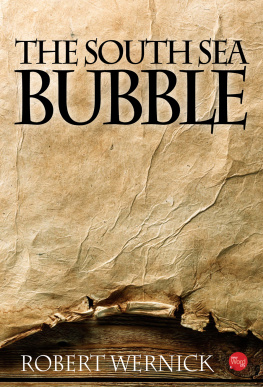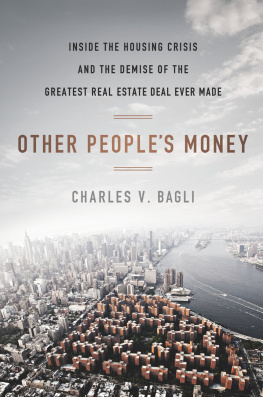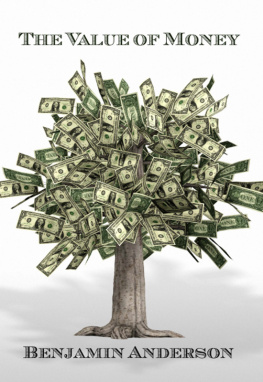Early Speculative Bubbles and
Increases in the Supply of Money
DOUGLAS E. FRENCH
Second Edition

MISES INSTITUTE

First edition 1992 by Douglas E. French
Second edition 2009 by the Ludwig von Mises Institute and published under the Creative Commons Attribution License 3.0. http://creativecommons.org/licenses/by/3.0/
Ludwig von Mises Institute
518 West Magnolia Avenue
Auburn, Alabama 36832
www.mises.org
ISBN: 978-1-933550-44-2
To Deanna,
for loving me through
the boom and the bust.
Introduction
As all the world economies writhe in financial pain from the cleansing of the largest bubble in financial history, the question is being askedhow could this happen? Of course the usual answers are trotted outhuman greed, animal spirits, criminal fraud, or capitalism itself. Modern financial history has been a series of booms and busts that seem to blend together making one almost indistinguishable from the next. The booms seduce even the most conservative into taking what in retrospect appear to be outlandish risks speculating on investment vehicles they know nothing about.
In response to the financial meltdown, central banks are slashing interest rates to nearly zero and growing their balance sheets exponentially. With no more room to lower rates, central bankers now speak of a quantitative easing policy which in plain English means creating money out of nowhere. But no one is shocked or horrified by this government counterfeiting. All this, after the U.S. central bankthe Federal Reservehas already, at this writing, increased the M-2 money supply 11-fold ($686 billion to $8.2 trillion) since August of 1971 when the U.S. dollars last faint ties to gold were severed.
While history clearly shows that it is this very government meddling in monetary affairs that leads to financial market booms and the inevitable busts that follow, mainstream economists either deny that financial bubbles can occur or claim that the animal spirits of market participants are to blame. Economists running central banks even claim that it is impossible to identify asset bubbles. Meanwhile, the Austrian School stands alone in pointing the finger at government intervention in monetary affairs as the culprit.
Austrian economists Ludwig von Mises and Friedrich A. Hayeks Austrian business cycle theory provides the framework to explain speculative bubbles. The Austrian theory points out that it is governments increasing the supply of money that serves to lower interest rates below the natural rate or the rate that would be set by the collective time preferences of savers in the market. Entrepreneurs react to these lower interest rates by investing in higher order goods (e.g., factories and machinery) in the production chain, as opposed to consumer goods.
Despite these actions by government, consumer time preferences remain the same. There is no real increase in the demand for higher order goods and instead of capital flowing into what the unfettered market would dictateit flows into malinvestment. The greater the monetary expansion, in terms of both time and enormity, the longer the boom will be sustained.
But eventually there must be a recession or depression to liquidate not only inefficient and unprofitable businesses, but malinvestments in speculationwhether it is stocks, bonds, real estate, art, or tulip bulbs.
This book was my masters thesis (with just a couple of slight changes and additions) written under the direction of Murray Rothbard and it examines three of the most famous boom and bust episodes in history. Government monetary intervention, although different in each case, engendered each: Tulipmania, the Mississippi Bubble, and the South Sea Bubble.
As the seventeenth century began, the Dutch were the driving force behind European commerce. Amsterdam was the center of this trade and it was in this vibrant economic atmosphere that tulipmania began in 1634 and climaxed in February 1637. At the height of tulipmania, single tulip bulbs were bid to extraordinary amounts with the Witte Croonen tulip bulb rising in price 26 times in a
In 1716, the French government was on the verge of bankruptcy and its citizens were fed up with their governments currency depreciation, recoinage schemes and increased tax collections. The situation was ripe for the notorious John Laws monetary magic which was to lighten the burden of the King and the State in lowering the rate of interest on Frances war debts and to increase the supply of money to stimulate the French economy. Ultimately, the scheme, which was the Mississippi Company, unraveled and an outraged French public ultimately forced the Regent to place the once revered Law under house arrest.
While John Law was struggling to keep his Mississippi bubble inflated, across the English Channel, a nearly bankrupt British government looked on with envy, believing that Law was working a financial miracle. Sir John Blunt followed Laws example with his South Sea Company, which in exchange for being granted monopoly rights to trade with South America, agreed to refinance that governments debt.
The company had no real assets, but that didnt matter as speculators bid the share price higher and higher, spawning the creation of dozens of other bubble companies. The South Sea Company lobbied the British government to pass a Bubble Act that would shut down these new companies that were competing for investor capital. Ironically, it was the enforcement of that act that burst the bubble with South Sea Company shares falling nearly 90 percent in price.
Although these episodes occurred centuries ago, readers will find the events eerily similar to todays bubbles and busts: low interest rates, easy credit terms, widespread public participation, bankrupt governments, price inflation, frantic attempts by government to keep the booms going, and government bailouts of companies after the crash.
Although we dont know what the next asset bubble will be, we can only be certain that the incessant creation of fiat money by government central banks will serve to engender more speculative booms to lure investors into financial ruin.
The Greater Fool Theory 1
Speculative bubbles have occurred throughout history. These episodes are characterized by a continuous sharp rise in the price of a particular asset or group of related assets, leading to further price increases driven by new speculators seeking profits through even higher prices. These higher prices are driven by the potential profits to be made through trading, rather than the earning capacity or economic value of the asset. These speculative manias then come to abrupt and dramatic endings, as expectations change and buyers quickly become sellers, in mass. The consequences are often disastrous, with the ensuing crash inflicting financial pain on the region or country involved. Euphoria turns to despair as the mandatory readjustment that takes place in the economy creates massive worker dislocation and great numbers of bankruptcies.
Contemporary economists views concerning speculative bubbles vary. The Rational Expectations School questions whether speculative bubbles can happen at all, given rational markets. Charles Kindleberger concisely gives the rational expectations viewpoint:
Rational expectations theory holds that prices are formed within the limits of available information by market participants using standard economic models appropriate to the circumstances. As such, it is claimed, market prices cannot diverge from fundamental values unless the information proves to have been widely wrong. The theoretical literature

